How does a PCP air rifle work?
24 May 2024 | Air Arms
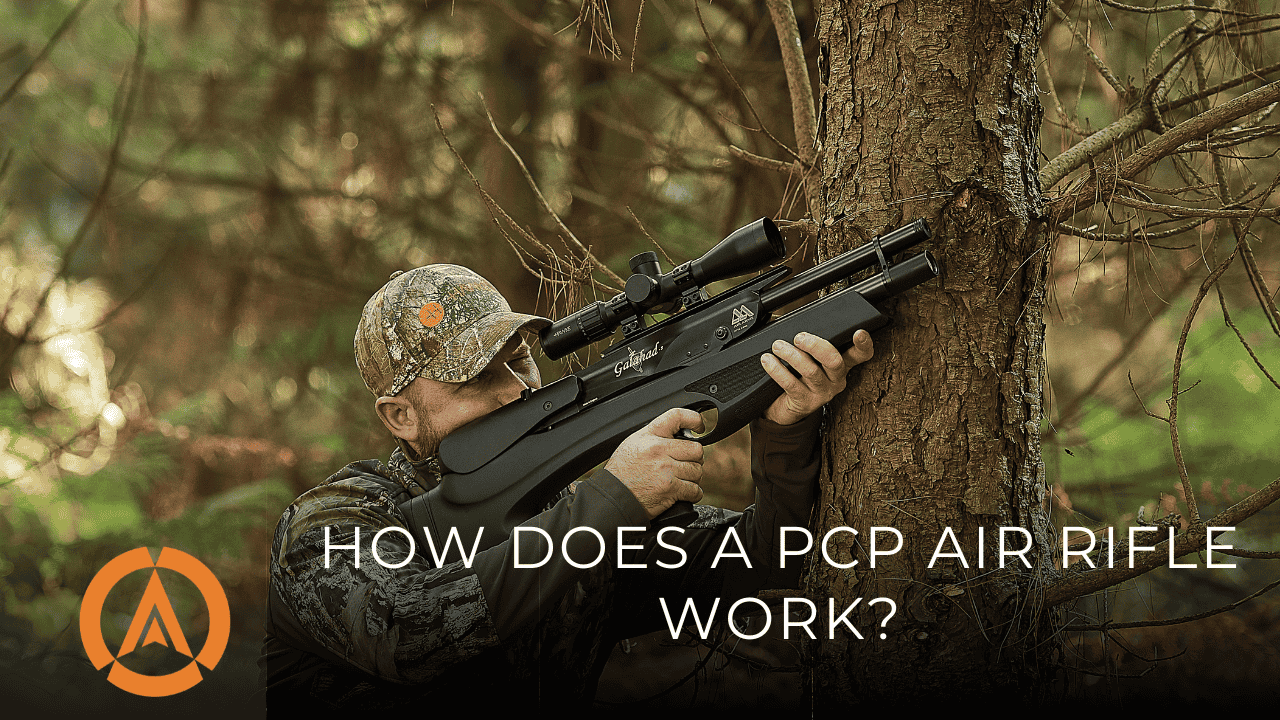
PCP (Pre-Charged Pneumatic) air rifles are an incredibly popular airgun choice for many shooters. Their power and ease can be unmatched in the field, proving they're a go-to choice in the air rifle world. But how do these fantastic air guns work?
Understanding the intricate workings of PCP air rifles is crucial for enthusiasts and novices alike, shedding light on the mechanics that drive their impressive performance and efficiency. In this blog post, we will delve into the inner mechanisms of PCP air rifles, exploring how these airguns harness compressed air to propel pellets with precision and power.
What is a PCP air rifle?
PCP air rifles are a type of air rifle that uses compressed air as the primary power source to propel pellets with accuracy and consistency.
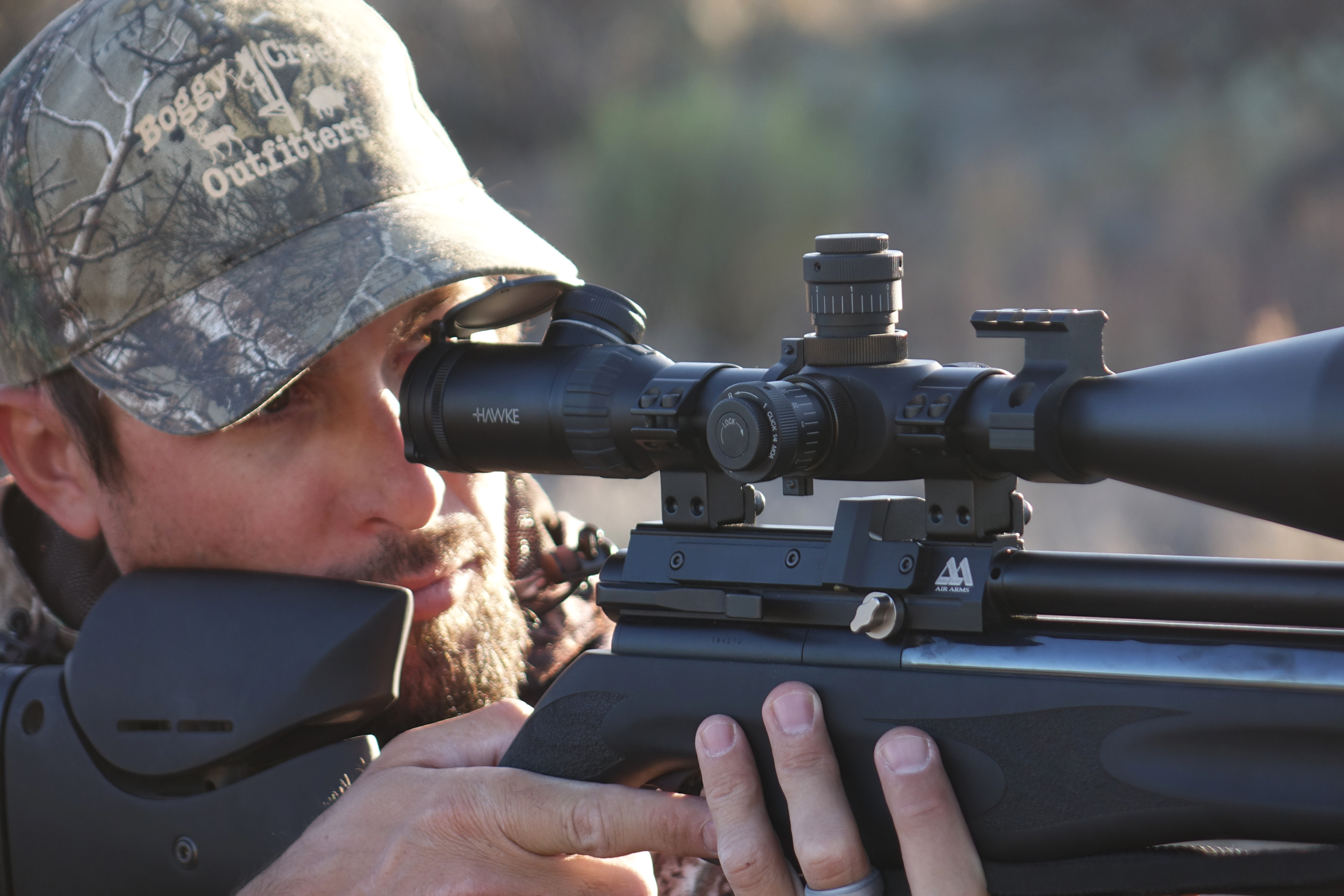
How does this compare with other air rifles?
Unlike spring air rifles that rely on a coiled spring or CO2-powered air rifles that use carbon dioxide cartridges, PCP air rifles store pressurised air in a reservoir for repeated shots.
Spring-Powered: Spring-powered air rifles rely on a coiled spring to generate power. They require manual cocking before each shot, leading to inconsistency in power output and increased recoil.
CO2-Powered: CO2 air rifles utilise disposable or refillable CO2 cartridges to propel pellets. While easy to use and convenient, they can be affected by temperature variations, impacting performance.
Gas Piston Air Rifles: A gas ram air rifle operates on a mechanism where the coiled steel mainspring found in traditional spring-piston guns is replaced with a sealed "gas spring" unit.
Breakdown of Key PCP Air Rifle Components:
High-Pressure Vessel: The high-pressure reservoir or vessel is the heart of a PCP air rifle. It stores compressed air at pressures and acts as the power source for propelling pellets down the barrel.
Valve System: The valve system controls the release of compressed air from the reservoir into the barrel. It ensures that the air is released in a controlled manner when the trigger is pulled, dictating the velocity and trajectory of the pellet.
Barrel: The barrel serves as the conduit through which the pellet travels when propelled by the compressed air. A high-quality, rifled barrel is crucial for accuracy, as it imparts spin to the pellet for stability in flight.
Pellet: The ammunition used in PCP air rifles, pellets come in various shapes and sizes to suit different shooting applications. The design and weight of the pellet, combined with the air pressure and barrel characteristics, influence the accuracy and impact of each shot.
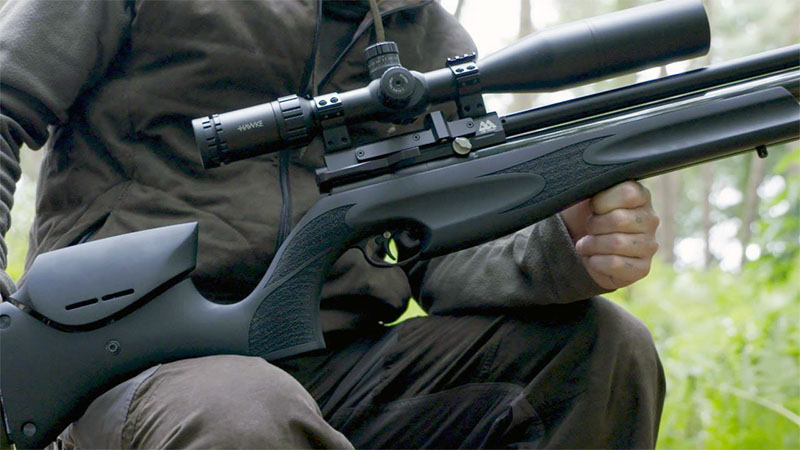
When considering the components of a PCP (Pre-Charged Pneumatic) air rifle, several key elements come into play to ensure its functionality and performance:
Regulators: Regulators help maintain a consistent pressure level within the air rifle, ensuring each shot delivers the same power and accuracy. They contribute to shot-to-shot consistency and overall performance.
Stocks: Stocks are the part of the air rifle that you hold onto while shooting. They provide stability, comfort, and control over the firearm, influencing the shooter's accuracy and experience.
Sights: Front and rear sights aid in accurately aiming the air rifle. They help align the shooter's eye with the barrel, improving precision and targeting.
Fill Probes: Fill probes and refill the pressurised tank with air. They facilitate recharging the rifle, ensuring it remains operational for extended shooting sessions.
Firing Mechanism
The firing mechanism of a PCP air rifle is a symphony of precise movements and controlled bursts of compressed air, culminating in a swift and accurate shot. Understanding the intricate process from trigger pull to pellet propulsion is vital to appreciating the finesse behind each shot fired from a PCP air rifle.
The process from Trigger Pull to Pellet Propulsion:
Trigger Activation: The shooter initiates the firing sequence by pulling the trigger, which sets the mechanism in motion.
Valve Release: Upon trigger activation, the air rifle valve system opens, allowing pressure from the reservoir to flow into the barrel.
Pellet Engagement: Simultaneously, the pellet is loaded into the barrel's breech, ready to be propelled forward.
Compressed Air Expansion: As the pressurised air expands rapidly behind the pellet, it creates a force that propels the pellet down the rifled barrel.
Pellet Propulsion: The expanding air accelerates the pellet through the barrel, imparting spin and velocity for a precise and powerful shot.
Impact of Compressed Air Release on Pellet Velocity:
The controlled release of compressed air ensures a consistent and predictable acceleration of the pellet, leading to improved accuracy.
The pressure and air volume determined the pellet's velocity, impacting its trajectory and energy transfer upon impact.
Proper regulation of the air release is critical for achieving optimal performance and maintaining shot-to-shot consistency.
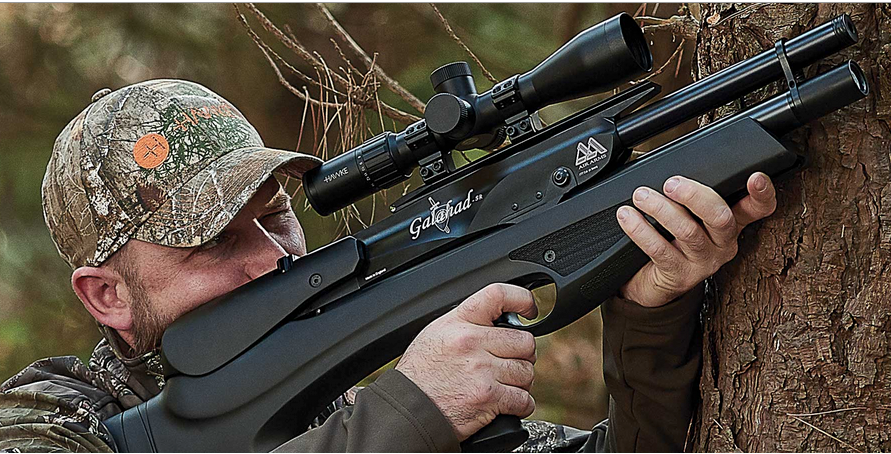
Why choose a PCP air rifle?
Now that you have a better understanding of how a PCP air rifle works let's take a look at why a PCP air gun is such a popular choice.
Accuracy and Consistency: PCP air rifles are known for their exceptional accuracy and consistency shot after shot. The pre-charged air reservoir provides a stable and consistent power source, resulting in precise shooting performance.
Power and Range: PCP air rifles offer more power and range than other air rifles. They can generate high muzzle velocities, making them suitable for hunting small game and target shooting at longer distances.
Multiple Shots: PCP air rifles often feature multi-shot capabilities, allowing shooters to take multiple shots without the need to manually cock or reload the rifle between shots. This feature enhances efficiency during shooting sessions.
Adjustable Power Settings: Many PCP air rifles come with adjustable power settings, enabling shooters to customise the velocity and energy output based on their shooting needs. This versatility makes PCP rifles adaptable to various shooting scenarios.
Quiet Operation: PCP air rifles operate quietly compared to traditional firearms, making them ideal for backyard shooting, pest control, and hunting situations where noise reduction is desirable.
Reduced Recoil: The design of PCP air rifles results in minimal recoil, providing a smoother shooting experience and better accuracy, especially for shooters looking for a more controlled and stable shooting platform.
Ease of Use: With no need for spring tensioning or pumping before each shot, PCP air rifles are relatively easy to operate. Refill the air reservoir when needed, and the rifle is ready.
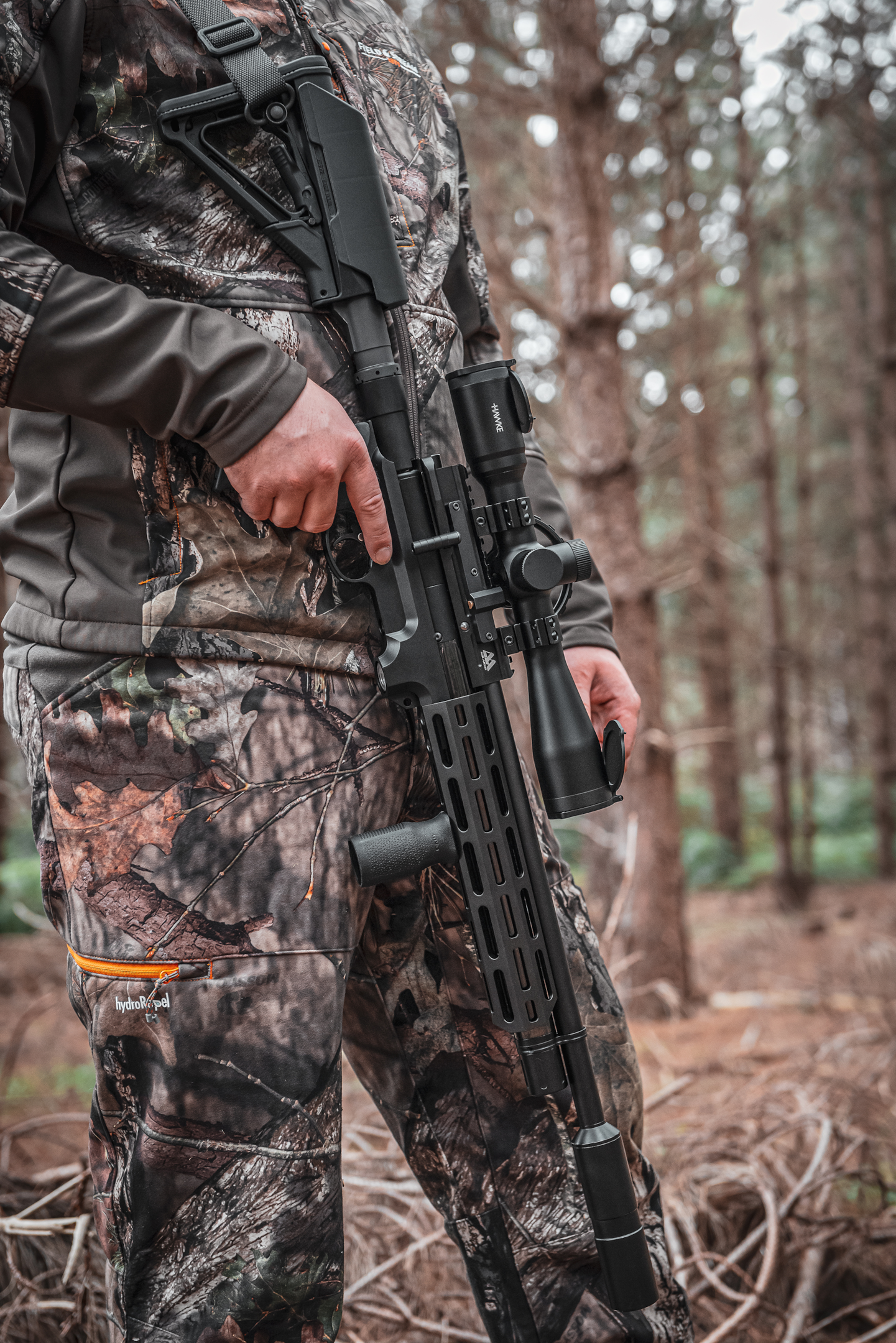
What can they be used for?
PCP (Pre-Charged Pneumatic) rifles are versatile firearms that excel in various shooting applications, making them popular among shooters and hunters.
Target Shooting: PCP rifles are highly favoured for target shooting disciplines such as precision shooting. Their exceptional accuracy, consistency, and minimal recoil make them ideal for competitive target shooting.
Small Game Hunting: PCP rifles are well-suited for small to medium-game hunting due to their power, range, and accuracy. Hunters appreciate the quiet operation of PCP rifles, which is advantageous for stealthy shooting and not disturbing wildlife.
Pest Control: The precision and power of PCP rifles make them effective tools for pest control. Whether dealing with rodents, pests damaging crops, or nuisance animals, PCP rifles offer a humane and efficient solution for pest management.
Recreational Shooting: For recreational shooters looking to enjoy plinking, informal target shooting, or honing their shooting skills, PCP rifles provide an enjoyable and engaging shooting experience. Their ease of use and consistent performance suit them for casual shooting sessions.
Training and Skill Development: PCP rifles are valuable training tools for shooters of all levels, including beginners and experienced shooters. The controlled nature of PCP rifles allows shooters to focus on improving marksmanship skills, understanding ballistics, and practising proper shooting techniques.
Long-Range Shooting: With their high muzzle velocities and extended effective ranges, PCP rifles can shoot long. Shooters interested in precision shooting at longer distances find PCP rifles reliable instruments for hitting targets accurately at extended ranges.
The Importance of Maintaining Your PCP Air Rifle
Proper care and attention to detail are paramount in preserving the performance and longevity of your PCP air rifle. From ensuring the airgun remains pressurised to implementing preventative measures, a proactive approach to maintenance can enhance the functionality and lifespan of your prized airgun.
Consistent Performance: A properly pressurised airgun ensures consistent power delivery with each shot, promoting accuracy and reliability.
Shot-to-Shot Consistency: Maintaining the correct pressure level in the reservoir minimises variations in velocity and trajectory, enhancing shooting precision.
Optimised Efficiency: An adequately pressurised airgun maximises the efficiency of the firing mechanism, translating stored energy into kinetic energy efficiently.
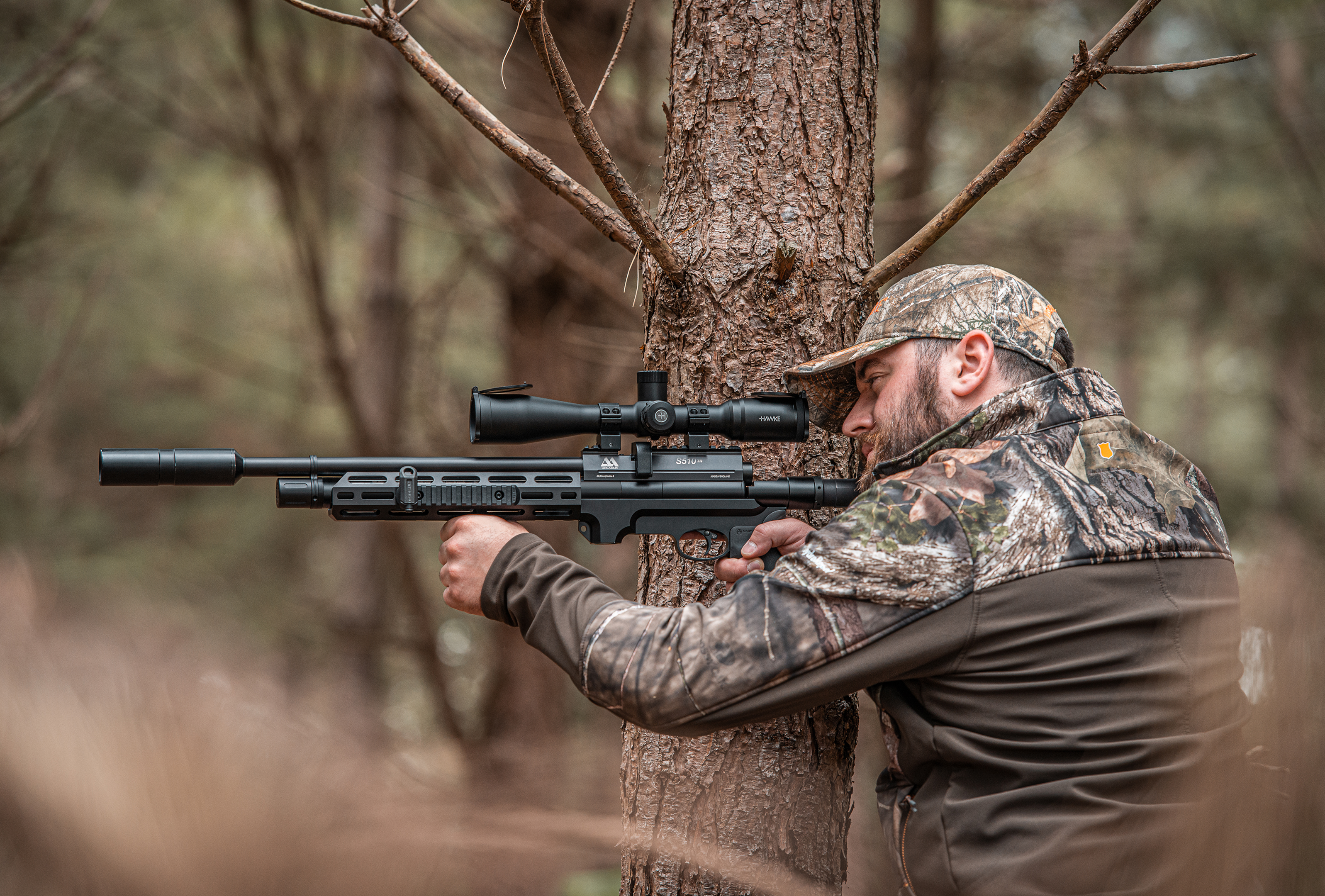
Preventative Measures for Optimal Performance and Longevity:
When it comes to maintaining your airgun, a thorough approach can significantly impact its longevity and performance. Here are additional details to enhance your airgun maintenance routine:
Inspection Checklist:
Check the stock for cracks or damage that may compromise stability.
Inspect the trigger mechanism for proper function and adjust if necessary.
Examine the scope mounts for tightness and alignment to maintain accuracy.
Verify the magazine or loading mechanism for smooth operation and cleanliness.
Storage Best Practices:
Use a gun case or safe to protect the airgun from dust, moisture, and unauthorised access.
Consider using desiccants or rust inhibitors in the storage area to prevent corrosion.
Store pellets or BBs in a separate container to avoid contamination and maintain their quality.
Cleaning Techniques:
After shooting sessions, use a cleaning rod, patches, and solvent to thoroughly clean the barrel.
Disassemble the action carefully to clean internal components like the bolt and trigger assembly.
Avoid over-lubrication as it can attract dirt and affect the airgun's performance.
Seal Care Tips:
Regularly inspect O-rings and seals for signs of wear, nicks, or drying out.
Apply silicone grease or seal conditioner to keep seals supple and maintain a secure seal.
Follow manufacturer guidelines for seal replacement to ensure proper pressurisation.
Lubrication Guidelines:
Use recommended lubricants sparingly on metal-to-metal contact points to reduce friction.
Avoid petroleum-based oils that can degrade seals and synthetic lubricants that may cause buildup.
Clean excess lubricant to prevent attracting debris and maintain smooth operation.
Final Considerations
Through the compressed air reservoirs, regulated pressure systems, and advanced engineering of PCP air rifles, shooters are presented with a tool that embodies accuracy, consistency, and versatility. The seamless integration of technology and craftsmanship in these rifles opens new possibilities in target shooting, hunting, and beyond.
Whether you seek pinpoint accuracy, extended shooting sessions, or quiet precision, PCP air rifles emerge as a popular choice for those who value quality, reliability, and innovation in their shooting experiences. Here at Air Arms, we have a range of options for you - from a low and high-powered air rifle to spring and PCP break barrel air rifles - we can find the perfect air rifle for you. If you'd like to learn more about these air guns, or have any queries on the laws and entry level air rifles, please do not hesitate to contact a member of our team.





